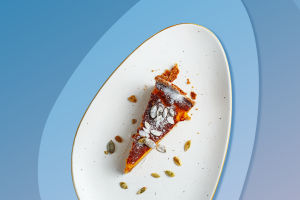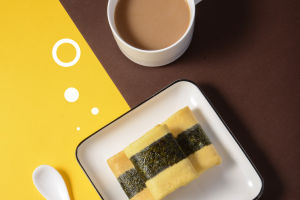Europeans mainly bread for breakfast, no matter which country, breakfast is bread. There are many types of bread in the bread shop, including noodle slices, long bread, and round bread.
Bread slices and long bread have no auxiliary ingredients in themselves. When eating, they must be equipped with various jams, butter, ham sausage, etc. when eating.
Europeans know that there is such an allusion. Someone once asked the inventor Einstein: "What is the greatest invention in the world?" He replied without hesitation: "Bread!"
In 6000 BC, the ancient Egyptians invented bread. Later, this technology was introduced into ancient Rome by ancient Greece, which quickly swept the entire European continent.
Later, a cooking master in Denmark improved the breading process, and then our modern bread appeared.
Bread can be divided into salty bread and sweet bread according to the taste, and can be divided into staple bread and snack bread according to use.
Bread can be divided into long, round, rectangular, stick-shaped, and flower-shaped bread the shape. However, people are accustomed to dividing the bread into two categories: soft bread and hard bread according to baking.
Division according to color:
1) White bread: The flour made of white bread grinds from the core part of wheat particles. Because the color of the flour is white, the bread color is also white.
2) Brown bread: The flour used to make this bread contains the core part of wheat particles, and also includes 10%bran.
3) Wholemeal bread: The flour used to make the bread includes all parts of wheat particles. Therefore, this kind of bread is also called whole grain bread. The color of the bread is deeper than brown bread. The main edible area is North America.
4) Watana bread: flour comes from rye, contains high cellulose, and the bread color is deeper than whole wheat bread. The main edible areas and countries include Nordic, Germany, Russia, the Baltic coast, and Finland.
Division according to the material:
1. Wholemeal bread: All-wheat bread refers to bread made with all-wheat flour. All-wheat bread is characterized by slightly brown. You can see a lot of wheat bran with the naked eye. The texture is rough, but it has an aroma. It is rich in crude fiber, vitamin E, and minerals. However, because its vitamin B is richer, it is more likely to deteriorate than ordinary bread.
2. Gluten-free bread: Gluten-free bread is made from other grains instead of wheat. Generally speaking, gluten-free bread fibers are less than wheat bread. But this bread is not higher than the nutritional value of ordinary bread.
3. White bread: white bread adds dietary fiber. It is healthier than ordinary white bread. If your child refuses to eat whole-grain bread, you might as well give them this.
4. Whole grain bread: Whole grain bread contains a lot of grains. Whole grain bread is rich in carbohydrates, protein, vitamins, and minerals. The whole grain bread uses all-wheat flour as the basic ingredients, as well as a large number of grains and seeds.


